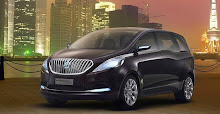The 2010 BMW 5-series Sedan is set to arrive later this year as a 2010 model and heavily disguised prototypes have been seen testing around the streets of Munich on a number of occasions. These latest shots give us a look at the Touring model, which is expected to arrive roughly 12 months after the launch of the Sedan.

Under the car's new sheet metal, BMW will continue with its love of turbocharging. The new 4.4L twin-turbo V8 from the X6 is expected to appear in a range topping model, while more turbo-diesel variants are expected to join the lineup as well. BMW is currently developing its second generation common rail system for its diesel powerplants, which will operate at greater pressure for improved performance. The transmission systems will include a six-speed manual and a six-speed Steptronic semi-auto gearbox, however a new eight-speed unit from ZF is also expected to be available.
Performance will also be improved thanks to the extensive use of lightweight materials including carbon-fiber and aluminum. The car’s construction will be a hybrid of an aluminum spaceframe for the front section, and a traditional steel monocoque for the passenger compartment and rear. This will ensure a favorable front-to-rear weight distribution and improved handling. Up front will be an independent suspension with MacPherson struts, with a multi-link layout for the rear. High-performance models will include carbon-fiber body panels to shed even more weight.

Under the car's new sheet metal, BMW will continue with its love of turbocharging. The new 4.4L twin-turbo V8 from the X6 is expected to appear in a range topping model, while more turbo-diesel variants are expected to join the lineup as well. BMW is currently developing its second generation common rail system for its diesel powerplants, which will operate at greater pressure for improved performance. The transmission systems will include a six-speed manual and a six-speed Steptronic semi-auto gearbox, however a new eight-speed unit from ZF is also expected to be available.
Performance will also be improved thanks to the extensive use of lightweight materials including carbon-fiber and aluminum. The car’s construction will be a hybrid of an aluminum spaceframe for the front section, and a traditional steel monocoque for the passenger compartment and rear. This will ensure a favorable front-to-rear weight distribution and improved handling. Up front will be an independent suspension with MacPherson struts, with a multi-link layout for the rear. High-performance models will include carbon-fiber body panels to shed even more weight.





No comments:
Post a Comment